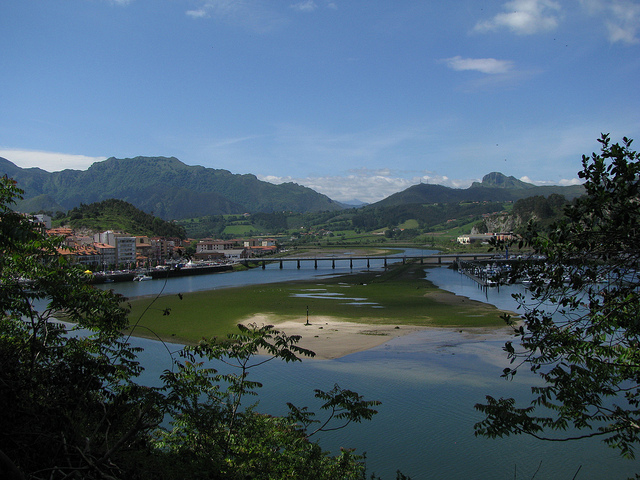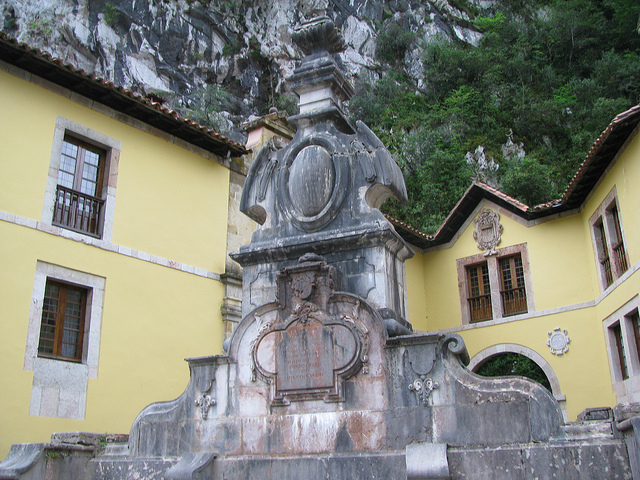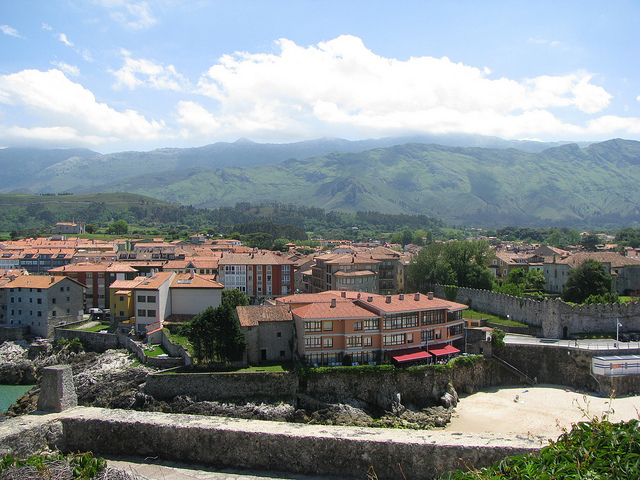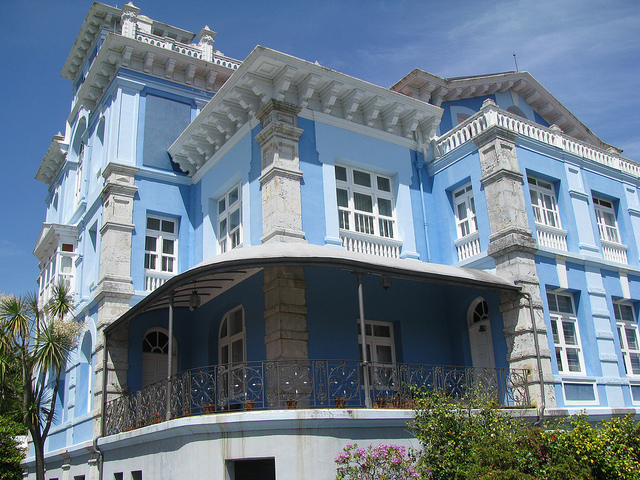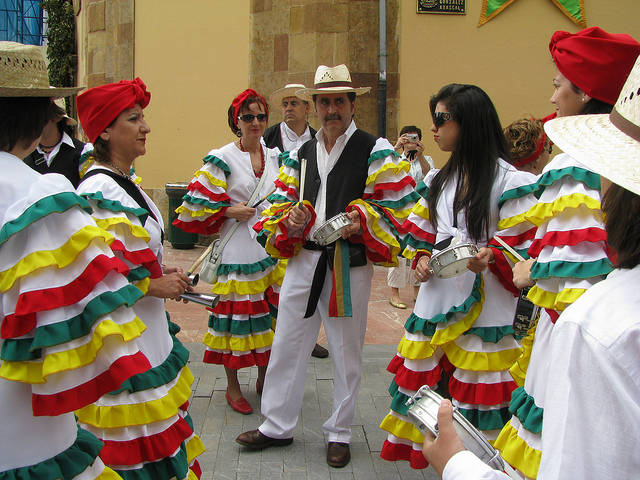Well, my time in the high mountains of the Asturian Picos de Europa was over. I checked out of the Hotel La Cepada, my cozy mountain abode with the picturesque views of the town of Cangas de Onís, got into my car and drove northwards towards the Atlantic coastline. After two days with rather poor weather, the skies were clearing up nicely and a gorgeous sunny day was in store for me.

The entrance to the Cueva de Tito Bustillo prehistoric cave
To get exposed to some of the prehistoric sights in Asturias I stopped at the Cave of Tito Bustillo, which is world-renowned for its Paleolitic art. Located on the western bank of the Sella River in the small town of Ribadesella, this cave was discovered by a group of adventurous young men in 1968. One of these young men, Tito Bustillo, died just days afterwards in a mountaineering accident and the cave was named in his honour. I joined a tour group to get a better understanding of this unique ancient heritage site.

The cave paintings in the Tito Bustillo Cave
The Cueva de Tito Bustillo is a karst cave that is entered through a main gallery with a length of 540 metres. Then there is a junction with a path leading off to the right to the original entrance of the cave while to the left we reached the room of paintings. Our expert guide pointed out various cave paintings of horses, cows, bisons, deer and reindeer, all animal species that would have lived here in the Paleolithic area.

Amazing pre-historic paintings at the Cave of Tito Bustillo
The colours include purple, raw sienna and black, and some of them are still quite vivid many thousands of years after their creation. Our guide explained the difference between paintings of different epochs. Another section of the cave includes paintings of female vulvas, a prehistoric celebration of fertility. The cave paintings in the Cueva de Tito Bustillo are between 12,000 and 24,000 years old and they are of similar quality and importance as the caves of Altamira and Lascaux.

View of the harbour of Ribadesella
Now back out in the gorgeous sun, I drove back across the bridge over the Sella River and looked for the tourism office of the town of Ribadesella. I immediately took a liking to this town, which is set against the foothills of the Picos de Europa mountains, and nestled against the banks of the Sella River which forms a large bend here before flowing into the Atlantic Ocean. Not surprisingly, the town has chosen the slogan “The Beach of the Picos de Europa”, a perfect description of this scenic place.

Ribadesella is a very pretty town
The young lady at the Tourism Office gave me a two-minute summary of the town of Ribadesella and equipped me with all sorts of brochures that would allow me to go on a self-guided tour of town. Ribadesella is a small town of about 6,300 people that looks back on a long history. As the Tito Bustillo Cave illustrates, this area has been inhabited for tens of thousands of years.

Colourful houses in Ribadesella
Even the ancient Greeks already talked about settlements in the area. Naturally, the Romans colonized this region as well, and during the Middle Ages, Ribadesella became an important post for maritime trade, particularly salt, an indispensable ingredient in salting fish. Salmon fishing also was an important economic contributor in the area. The town’s location on the Cantabrian Sea at the mouth of the Sella River proved to be highly strategic throughout the centuries.

Stone house in Ribadesella
In 1865 finally a wooden bridge was built over the Sella River that was replaced by an iron bridge which ended up being destroyed in 1937 during the Spanish Civil War. The concrete bridge we see today connects the western bank of the town and its long beach with the historic downtown area on the eastern side of the river. One of the biggest attractions in town is the International Descent of the Sella (Descenso Internacional del Sella), a popular canoe race that is held annually on the first weekend of August. The race begins in Arriondas and finishes in Ribadesella, an event that attracts thousands of outdoor adventurers every year.

The narrow streets of Ribadesella
